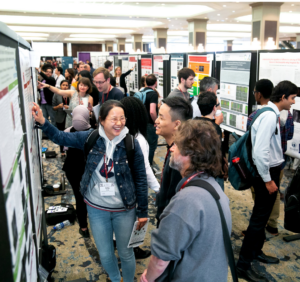In the search for what drives complex health traits like blood pressure, researchers are looking beyond the genome. While polygenic risk scores (PRS), which estimate a person’s genetic predisposition to a trait based on several variants, offer some predictive power, it’s increasingly clear that integrating environmental and lifestyle factors into predictive models is essential for improving trait prediction. Two new studies published in GENETICS approach this challenge from different angles: one through large-scale statistical modeling, and the other through gene expression analysis in immune cells. Together, they underscore the biological and analytical importance of considering lifestyle in our models of health.
In the first study, Tiezzi et al. investigate whether including lifestyle information can improve the prediction of systolic and diastolic blood pressure, as well as pulse pressure, using data from more than 100,000 older adults in the UK Biobank. Rather than treating environmental variables as static covariates, the authors incorporated 27 lifestyle factors ranging from alcohol intake to physical activity into their polygenic models both with and without adjustments for genetic confounding. Their findings reveal a critical modeling insight: raw lifestyle data can introduce bias due to “reverse causation,” where genetically influenced traits (like BMI or alcohol use) masquerade as independent environmental exposures. When these variables were properly adjusted for, prediction accuracy improved—highlighting the power, but also potential complications, of integrating lifestyle data into polygenic prediction models.
Shifting from prediction to mechanism, in the second paper, Arnold et al. explore how poverty influences gene expression in immune cells and contributes to health disparities. Analyzing blood samples from 204 participants in the Healthy Aging in Neighborhoods of Diversity Across the Life Span (HANDLS) study in Baltimore, Maryland, the researchers found that living in poverty was associated with changes in the expression of 138 genes in peripheral immune cells. Many of these genes are linked to wound healing and coagulation pathways, which are known to contribute to cardiovascular disease and other chronic inflammatory conditions. Two of the genes, EEF1DP7 and VIL1, have also been linked to hypertension in transcriptome-wide association studies, reinforcing a potential connection between poverty-related gene expression and blood pressure regulation.
Arnold et al. also found that the gene expression effects of poverty were stronger in women than in men, raising further questions about how sex differences modulate environmental stress at the molecular level. Their work builds on existing evidence that socioeconomic status can shape gene expression across immune pathways, with potentially lasting effects on long-term disease risk.
Both studies illustrate the multifaceted relationship between genes and environment, where lifestyle can not only shape disease risk but also confound how we model it. Whether through refined genetic prediction models or gene expression profiling, both studies reinforce the importance of environmental context for understanding complex traits like blood pressure and the social disparities that influence them.
References
Improvement of polygenic modeling of blood pressure traits using lifestyle information in the UK Biobank
Francesco Tiezzi, Khushi Goda, Fabio Morgante
GENETICS. July 2025. 230(3).
DOI: 10.1093/genetics/iyaf089Living in poverty is associated with gene expression changes in immune cells
Nicole S. Arnold, Justyna Resztak, David Witonsky, Adnan Alazizi, Nicole Noren Hooten, Michele K. Evans, Valerie Odero-Marah, Douglas F. Dluzen, Roger Pique-Regi, Francesca LucaGENETICS. July 2025. 230(3).
DOI: 10.1093/genetics/iyaf072































